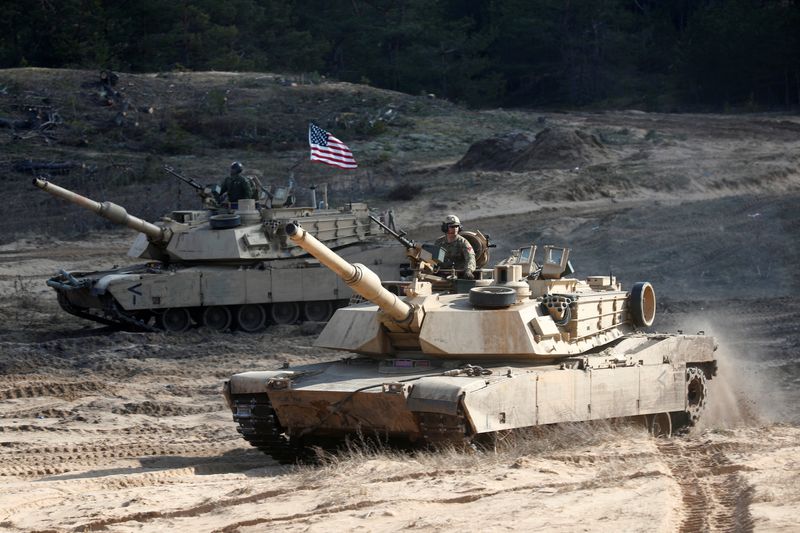By Phil Stewart
WASHINGTON (Reuters) - The United States aims to break the dynamic of grinding warfare and near-frozen front lines in Ukraine with newly announced military capabilities that it hopes will breath fresh momentum into Kyiv's battle against Russian forces, a senior Pentagon official said on Wednesday.
But Colin Kahl, the Pentagon's top policy adviser, said the Pentagon still wasn't prepared to meet Kyiv's calls for gas-guzzling M1 Abrams main battle tanks.
"I just don't think we're there yet," said Kahl, who had just returned from a trip to Ukraine. "The Abrams tank is a very complicated piece of equipment. It's expensive. It's hard to train on. It has a jet engine."
Kahl's remarks came ahead of this week's gathering of top defense officials from dozens of countries at the U.S. Ramstein Air Base in Germany to coordinate military aid for Kyiv.
The United States has committed roughly $24 billion to help Ukraine defend itself against Russian forces, including a new $3.5 billion package announced this month that includes Bradley Infantry Fighting Vehicles, self-propelled howitzers, armored personnel carriers, surface-to-air missiles and ammunition.
U.S. officials, speaking on the condition of anonymity, said President Joe Biden's administration is next expected to approve Stryker (NYSE:SYK) armored vehicles for Ukraine.
Pressure has been mounting on Germany to send its Leopard battle tanks to Ukraine -- or at least approve their transfer from third countries.
But Germany appears to want to tie any such contribution to a U.S. decision on Abrams. A German government source told Reuters Germany would allow German-made tanks to be sent to Ukraine to help its defense against Russia if the United States agrees to send its own tanks.
U.S. Defense Secretary Lloyd Austin is due to meet with Germany's new Defense Minister Boris Pistorius in Berlin on Thursday.
Kahl noted Britain's commitment to send 14 of its Challenger 2 main battle tanks to Ukraine, and, without confirming any German conditions on providing the Leopard, said: "I think if there is a concern about being alone in providing this capability, that shouldn't be a concern."
"But at the end of the day, you know, the German government is going to make a sovereign decision," the U.S. defense official said.
Kahl also praised Germany's contributions so far.
"I think we should give Germany an enormous amount of credit for their generosity toward Ukraine to date," he told reporters at the Pentagon.
Front lines have hardened in Ukraine since Kyiv wrested back significant territory in the east and south in the second half of 2022. Kahl described brutal, World War One-style engagements, with advances measured in blocks.

"Really what we're focused on is surging those capabilities to Ukraine for the next phase of the conflict to really try to change that dynamic and continue the momentum that the Ukrainians had in the late summer and early fall," Kahl said, echoing comments in Washington on Tuesday by British foreign minister James Cleverly.
The U.S. provision of Bradley fighting vehicles, combined arms training, and other new weaponry for the Ukrainians is meant to enable Kyiv to change the dynamic of static defenses "by being able to fire and maneuver through the use of more mechanized forces," Kahl said.